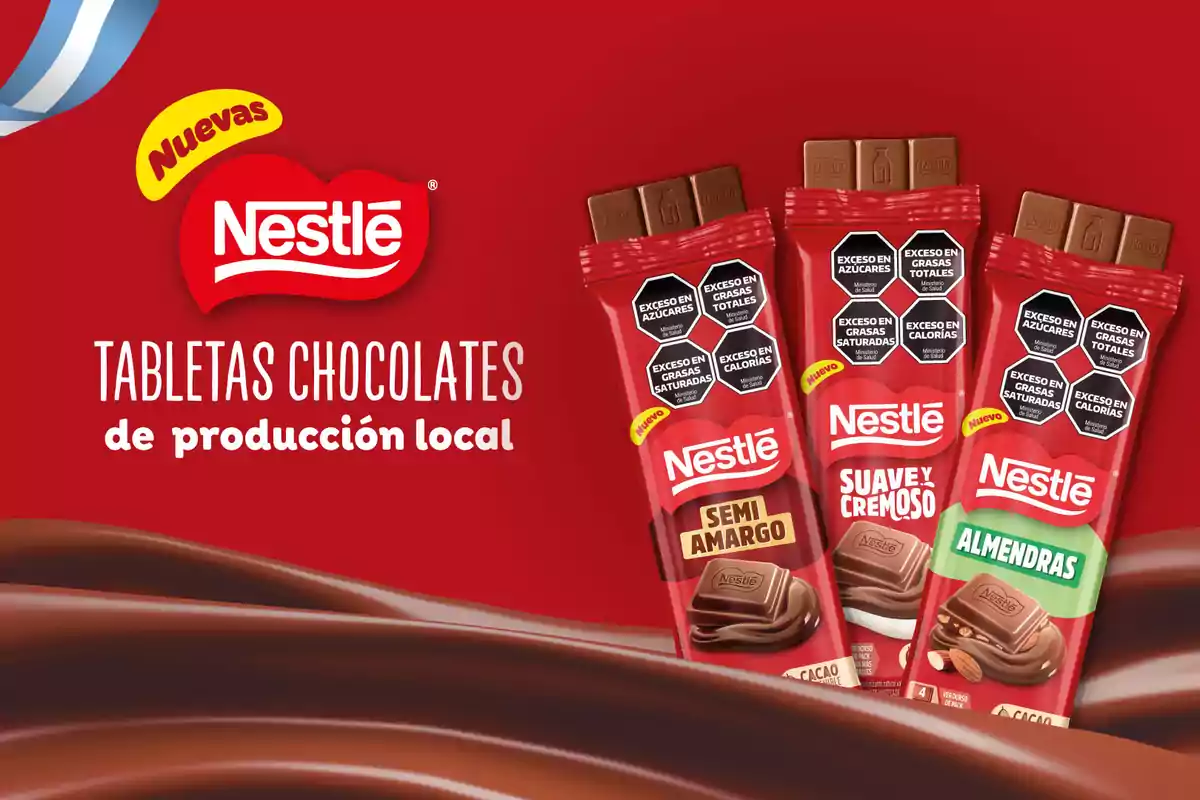
After 20 years, Nestlé will invest US$12 million and resume chocolate production
The multinational company invested 12 million dollars in its Magdalena plant and is once again manufacturing locally
Nestlé Argentina officially announced the return of local chocolate bar production, after more than twenty years since discontinuing this line in the country.
The decision is part of a business strategy aimed at strengthening national operations in a market that presents challenges but also significant potential. With this measure, the company reaffirms its intention to consolidate production within the country and replace imports, in this case coming from Brazil.
The company allocated a $12 million investment to launch the project at its plant located in Magdalena, Buenos Aires Province.

From there, three varieties of bars will be produced under the Chocolates NESTLÉ brand: super creamy milk chocolate, chocolate with almonds, and semi-dark chocolate. These products are being launched in 25 and 50 gram (0.88 and 1.76 ounce) presentations, formats designed to meet the trend of consuming smaller, more convenient portions, ready to be enjoyed at any time of day.
The return to local manufacturing is no minor event. Currently, the Argentine chocolate bar market accounts for 46% of the total category volume, with per capita consumption around 2 kilograms (4.4 pounds) per year. In addition, the sector is characterized by a high level of impulse buying decisions, which represent about 70% of the total, while the average consumer chooses six different types of chocolate throughout the year. These figures reinforce the importance of having a varied and attractive portfolio to compete in a dynamic and fragmented market.
In the words of Guillermo Canosa, head of the Chocolate business at Nestlé Argentina: “At Chocolates NESTLÉ, we challenge ourselves every day to develop proposals that meet the different preferences of consumers. We believe that everyone deserves to find their ideal chocolate, which is why we're committed to an increasingly versatile, innovative, and accessible portfolio.”.
The company also emphasized its focus on sustainability as an integral part of its production scheme. According to Canosa, “Sustainability is also a central part of how we work: we carefully select ingredients and apply good practices at every stage of the production process. This way, we not only guarantee the quality that sets us apart, but we also seek to generate a positive impact on the environment.”.

With 95 years of presence in Argentina, Nestlé initially entered the market with condensed milk and later expanded its offerings with brands such as Nesquik, Nido, and Bananita Dolca, as well as the Nespresso and Dolce Gusto coffee lines, and Purina pet foods. Currently, it has seven industrial plants in the country,employs 2,300 people, and exports to more than 30 international destinations.
The decision to resume chocolate bar production in Argentina is part of an import substitution scheme and, in economic terms, reinforces the importance of private investment to create jobs and boost national production. The relaunch also means that a product previously imported from Brazil will now be produced locally, resulting in greater domestic added value.
With this initiative, Nestlé takes an additional step in its expansion strategy within a competitive market and confirms that conditions exist for private capital to invest in Argentina.
More posts: